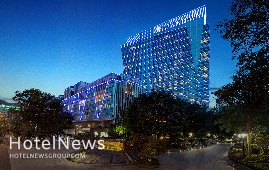
InterContinental Hotels & Resorts is utilizing advanced circadian technology to enable their guests to perform at their best during their travels. This collaboration is part of the transformative evolution of InterContinental Hotels & Resorts being rolled out globally. With a deep understanding of the diverse needs of modern travelers, InterContinental is introducing a range of initiatives under the banner of "Intentional Flexibility," designed to help guests seamlessly navigate their daily lives.
Create: May 29, 2024 Edit: May 29, 2024 International News
With the introduction of the "Dubai Bicycle City 2040" project by a urban design consulting firm recently, Dubai aims to surpass cities like Amsterdam and Copenhagen in the field of cycling. The establishment of cycling infrastructures, including "The Loop" bicycle highway, aims to provide easier access for residents to urban services and facilities, is among the initiatives of this project. The project's executive director has stated that the primary goal of this plan is to strategically plan for existing assets with the aim of creating a more sustainable city.
Create: Apr 7, 2024 Edit: Apr 7, 2024 International News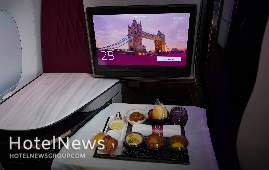
At the annual airline excellence awards ceremony, Qatar Airways has been selected as the winner of the "Best Hospitality Service of 2024" award.The selection criteria included the quality and variety of food, offering dishes suitable for passengers from various nationalities, services provided by flight attendants, and the quality of utensils and equipment used. Qatar Airways has received this award multiple times in previous years and was also recognized as the second-best airline globally for hospitality services in 2023.This award underscores Qatar Airways' commitment to providing high-quality services to its passengers.
Create: Apr 3, 2024 Edit: Apr 3, 2024 International News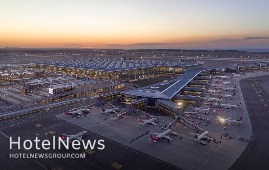
For the fourth consecutive year, Istanbul Airport has been named the Best Airport of the Year as part of the Aviation Transport Awards. According to the announcement by the Istanbul Airport Management Company, "iGA," the award was presented to Salahaddin Bilgen, the Deputy CEO of the company, during a ceremony in Athens, Greece. Istanbul Airport has surpassed its competitors worldwide in 2021, 2022, and 2023, securing the Best Airport of the Year award each time.
Create: Apr 3, 2024 Edit: Apr 3, 2024 International News
A new auction-based taxi service called Drife has been launched in Dubai, which can significantly reduce fares for passengersThe Drife app is the first decentralized transportation system in the United Arab Emirates, allowing passengers to view different drivers' offers for a trip and choose the best option. This system benefits everyone, as passengers pay lower fares, and drivers earn more income by eliminating commissions. Drivers pay a monthly subscription fee to use Drife.The company's app and website will be launched later this month, and initially, 100 limousines from a private company will be registered in the system.
Create: Feb 23, 2024 Edit: Feb 23, 2024 International News
Hotels that we look forward to their exciting opening in 2022 Part 3; Nobu Santorini Hotel- Greece 🇬🇷 The 26th branch of Nobu Hotel in Greece will be opened in Santorini Nubo hotel architect Designed in the traditional whitewashed Cycladic style with minimalistic décor to optimally enhance the dramatic vistas beyond. Nobu Hotel Santorini offers 25 stunning accommodations, all with breathtaking views of the Caldera and the Aegean Sea. It offer a nobu restaurant, luxe spa, fitness center, two level infinity pool and five pool villas Nobu hotel opening this spring is also just 20 minutes from santorini international airport. It also offers a unique blend of Japanese hospitality and stunning Santorini and Whether you’re looking for Nobu Hotel classics or locally packages, explore our offers to find the stay that suits you best.
Create: Oct 22, 2022 Edit: Oct 22, 2022 TV
Menus are an important aspect of the overall presentation of a hotel restaurant. Indeed, a whole book on proper menu design could be written, with inventory arrangements, fonts, graphics, spacing, types of paper, menu backings and all other stylistic concerns outlined as contributing factors for a guest’s overall appreciation of the dining outlet. The pandemic has thrown a wrench in this marketing and sentiment-boosting tool as many customers now expect menus to be accessible on their phones via a QR code. The benefit for the restaurant is certainly there in the form of saving on printing costs, but it’s nonetheless a tradeoff. The concern that we have over the proliferation of QR menus is that they don’t build guest satisfaction as much as their physical antecedents, and this reduced sentiment can halo back onto room revenues in a negative way. Here’s why: paper is palpable. You feel the slight roughness of a thick paper stock, subtly smell the ink, are delighted by the way the room’s lighting creates soft shadows on the page and are soothed by (what we ideally hope that you would use for your establishment) the touch of the leather menu backing on the palm of your hand. Viewing a menu on your phone gives you none of that. Yes, you get graphics, color and the ability to keep the webpage updated in real-time as inventory changes, but everything beyond the straight visuals are lost in the endless scroll of a two-dimensional screen. And building on this notion of scrolling, one critical difference is that a physical menu presents all items together for readers to consider, whereas a responsive webpage (over simply displaying a PDF version of the menu) will usually configure all items into a single column so as to keep everything legible and to avoid lots of pinching. This second drawback is one of perception, where a narrowly focused column on one’s phone can increase the observed length of the menu, resulting in patrons ‘dropping off’ before perusing the entirety of it. We see a similar trend in website readership where it falls precipitously after around the first quarter of an article or page. In sum, on digital-first menus, you have to put your most expensive items (or highest margin) items at the top or they will likely be missed. At this point, with the end of the pandemic still very much a question mark, optionality and fitting your theme is what works best. Paper menus should be readily presented at high-end restaurants so that the theme is congruent and customer satisfaction isn’t deteriorated, while at more casual settings a QR code access may be just fine. While there are both paper and labor costs associated with QR menus, you must still consider the above downsides.
Create: Jan 1, 2022 Edit: Jan 1, 2022 F and B
IHG® Hotels & Resorts, one of the world’s leading hotel companies, is proud to announce the signing of the InterContinental Grenada Resort. The 150-room Caribbean hotel will be built on La Sagesse Beach, approximately 30 minutes from the Maurice Bishop International Airport and the town of St. George’s. The InterContinental Grenada Resort will feature more than 30 private suites, an array of restaurants and bars, a luxurious spa and pool with bar and grill, fitness center, approximately 6,000 square feet of meeting space and a business center. The property is expected to open in 2025. Known as a top-rated tropical destination, La Sagesse Beach is a prime location for guests seeking a relaxing and secluded stay along Grenada’s spectacular southeastern shoreline. Julienne Smith, Senior Vice President, Development IHG, Americas, said: “Guests looking for the best in iconic luxury brands will be treated in style with a stay at InterContinental Grenada Resort. We’re excited to work with Range Developments to bring InterContinental’s elevated experience and world-class service to this Caribbean destination.” Mohammed Asaria, Managing Partner, Range Developments, said: “Whether guests come to experience luxurious spa treatments, relax in our stunning pools, dine at one of the specialty on-site restaurants or visit for a grand celebration, InterContinental Grenada Resort will deliver alluring and memorable guest experiences. We are excited to bring the strength of the InterContinental brand to beautiful Grenada. Range Developments has become the clear market leading Citizenship by Investment developer in the Caribbean with an unparalleled reputation for timely delivery and quality.” InterContinental Grenada Resort will be adjacent to Six Senses La Sagesse, Grenada, another Range Developments property and brand in IHG’s luxury portfolio, which is expected to open in 2023. InterContinental Hotels & Resorts has become synonymous with bold exploration, travel and cultural discovery, having pioneered luxury travel in emerging and well-loved destinations for the past 75 years. There are currently 13 InterContinental Hotels & Resorts in Latin America and 205 open globally, including 73 hotels in the pipeline.*
Create: Dec 22, 2021 Edit: Dec 22, 2021 International News
IHG® Hotels & Resorts, one of the world’s leading hotel companies, has announced the signing of a Management Agreement with Dallah Real Estate Company for a Hotel Indigo Resort in Durrat Al Arus, Jeddah. With this signing, IHG continues to expand its lifestyle portfolio in the country to cater to the future demand from new guest segments, seeking authentic Arabian experiences through Hotel Indigo’s neighbourhood story. No two hotel Indigo can be the same, as each has its own specific neighbourhood story embedded in the design, food and service. Due to open in early 2026, the Hotel Indigo Resort will be located in Durrat Al Arus, a recreational neighborhood north of Jeddah, and will be a leisurely drive away from the main city. The resort will be a part of a mixed-use development project consisting of a budding residential community, vast water frontage and man-made lagoons. Located along the Red Sea Coast, Hotel Indigo Resort in Durrat Al Arus will also be a perfect destination for guests to enjoy an active waterfront. IHG and Dallah Real Estate Company, will work in collaboration with renowned design studios and research agencies to weave the ‘Neighbourhood Story’ into the DNA of the hotel. The unique aesthetics of the resort and its service styles will immerse guests into the authenticity of the destination, its local culture, character and history. Along with boldly-designed 271 rooms, the resort will also feature 50 private pool villas, an expansive wellness facility, and home-grown food and beverage concepts that will not only offer a unique perspective to dining in Saudi Arabia – but also catch the interests of foodies and critics alike. Staying true to engaging with the neighbourhood, Dallah Real Estate Company has also partnered with 17Sixty – a marine adventure company that will enable the guests of Hotel Indigo, and residents of Jeddah, to experience marine flora and fauna like never before, keeping sustainability at its core. The company will also provide thrilling water sports activities to the guests. Speaking on the announcement, Haitham Mattar, Managing Director, India, Middle East & Africa, IHG said: “After debuting the brand in Riyadh, we are delighted to sign our second Hotel Indigo property in the country this year – Hotel Indigo Durrat Al Arus in Jeddah. In line with the Saudi Vision 2030 and the country’s Tourism Strategy, our luxury and lifestyle brands are gaining a lot of interest from our partners and investors. We are confident that upon opening, these properties will be equally popular with domestic and international travelers and will add to the authentic experiences guests will be looking for while visiting Saudi Arabia. We are also honored to once again partner with Dallah Real Estate Company, who boast a great deal of expertise in this sector. Together, we look forward to welcoming our guests to this exquisite property when it opens doors in 2026. ” Abdulaziz M.A Yamani, Managing Director, Dallah Real Estate Company said: “Given IHG’s history and strong legacy in the Kingdom, we are pleased to partner with them to offer our Saudi travellers and international guests a premium and authentic stay experience at Hotel Indigo Durrat Al Arus. The hotel will be positioned as a holistic destination for guests looking for adventure and an experiential stay. We are confident that this partnership will not only offer the best-in-class service to guests but also bring value to the business from IHG’s global systems and loyalty programme.” IHG currently operates 37 hotels in Saudi Arabia across five brands including InterContinental, Crowne Plaza, Holiday Inn, Staybridge Suites and voco. A further 23 hotels are in the development pipeline, due to open within the next three to five years.
Create: Dec 22, 2021 Edit: Dec 22, 2021 International News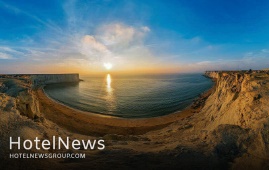
he development of Sistan-Baluchestan through tourism can help the region address its challenges, the deputy tourism chief of the southeastern province has announced. Through the development of tourism, a peace project can be pursued with the neighboring countries in the region, CHTN quoted Mojtaba Mirhosseini as saying on Tuesday. To date, tourism activists in the province have focused on activities for the sustainable development of tourism, which is highly commendable, the official added. The port of Chabahar has the potential to become the maritime tourism capital of Iran, and also the northern region of the province has the potential to become the historical tourism capital of the country, which with the right planning and building of necessary infrastructure, can be achieved, he noted. In order to increase the demand for visiting the province, its attractions and beauty need to be presented as much as possible, he explained. SEO and web marketing are among the most effective digital marketing tools in tourism and can help introduce more people to the province and local businesses, he mentioned. He also noted that organizing fam tours for Iranian tourism activists and media people significantly changed people’s perceptions of the region. Last year, former Cultural Heritage, Tourism, and Handicrafts Minister Ali-Asghar Mounesan said that the development of the travel industry across Sistan-Baluchestan province is among the top priorities for the ministry. “I am interested in Sistan-Baluchestan, and the development of this province is a priority for this ministry and the government,” the former minister stated. “The majority of my travels during my tenure has been to Sistan-Baluchestan, which I consider as a safe province with significant values in terms of culture, history, handicrafts, and tourism.” The collective province -- Sistan in the north and Baluchestan in the south -- accounts for one of the driest regions of Iran with a slight increase in rainfall from east to west, and an obvious rise in humidity in the coastal regions. In ancient times, the region was a crossword of the Indus Valley and the Babylonian civilizations. The province possesses special significance because of being located in a strategic and transit location, especially Chabahar which is the only ocean port in Iran and the best and easiest access route of the middle Asian countries to free waters. The vast province is home to several distinctive archaeological sites and natural attractions, including two UNESCO World Heritage sites, namely Shahr-e-Soukhteh (Burnt City) and Lut desert.
Create: Dec 22, 2021 Edit: Dec 22, 2021 Regional News
Hotels have been around for as long as we can remember, but where in history is the origin of this core sector of the tourism industry? While it might come as a surprise for many, the three oldest hotels in the world are all located in Japan and have been operating for hundreds of years. While Japan can boast this very interesting fact, the real champion of historic accommodation facilities is Europe with a large variety of old hotels. In this context, Tourism Review presents the top 10 oldest hotels on the Old Continent – each country represented by only one hotel. Hôtel Cour du Corbeau (France), est. 1528 Located in the heart of Strasbourg and a stone's throw from the cathedral, the Cour du Corbeau is one of the oldest hotels in Europe, being in operation since the beginning of the 16th century. At the same time, it is also one of the most beautiful architectural ensembles of the Renaissance period. The city-owned hotel offers 63 luxurious rooms to its guest, guaranteeing top-notch comfort and an experience to remember. Hostal dos Reis Católicos (Spain), est. 1499 Owned by the Paradores chain (in the ownership of the Spanish government), the Hostal dos Reis Católicos was built as a royal hospital to accommodate pilgrims traveling to Santiago de Compostela. Today, it continues to welcome visitors from all parts of the world in more than 100 rooms and boasts incredible luxury in the heart of one of Spain’s most important cities. Hotel Damier (Belgium), est. 1398 Located on the Grote Markt square in Kortrijk, Damier boasts an impressive history. The first mention of the hotel dates back to the 14th century, with the building boasting an astonishing Rococo façade from 1769. Today, the hotel offers 65 luxurious rooms that will certainly impress even the more demanding individuals. Hotel De Draak (Netherlands), est. 1397 Founded in 1397 and located in the historic center of Bergen op Zoom, Hotel de Draak is the oldest hotel in the Netherlands. It is possible that the hotel is even older, but a huge fire destroyed the city archives in the same year. It is currently owned by the Hazen family and boasts an impressive 62 rooms which provide the guests with fine comfort and luxury. Zum Roten Baeren (Germany), est. 1387 Labelled as the oldest hotel in Germany, the first mention of the Zum Roten Baeren hotel in Freiburg dates to 1387, with the building itself being one of the oldest ones in the city. The guesthouse has been a social center of the city for years and today it has 25 rooms, 20 employees and the ambition to appeal more to the public with its historic charm. Hotel-Gasthof Löwen (Lichtenstein), est. 1380 The Löwen has been offering its services in the hospitality industry since 1380, thus being the oldest hotel in the country. Today the hotel offers elegantly furnished rooms, organization of events and conferences and provides its guests with a gastronomic experience in the form of a restaurant to top it all off. Gastagwirt (Austria), est. 1380 The family led Gastagwirt hotel has been firmly rooted in Eugendorf, in the Salzburg region, for over 700 years. As early as 1380, the "irrevocable, indispensable and forever hereditary liquor license" was awarded to the guesthouse with a letter and a seal. In the present day, the hotel provides fine accommodation services, but especially some of the best seminar and meeting services and facilities in the country. Hotel Interlaken (Switzerland), est. 1323 Hotel Interlaken in Switzerland is also among the oldest hotels in Europe. It was opened in 1323 and was initially meant to be a guesthouse for visitors of the local monastery, while later it was a part of the administration of the region. Today, the family led hotel offers 55 rooms, event organization and much more in the heart of Switzerland. Hotel Alte Goste (Italy), est. 1142 The Alte Goste hotel has been in operation since the 13th century, although the first innkeeper known by name was Gild Stainer in 1557. The region itself served as one of the most important connections between the Holy Roman Empire and Italy. Today the hotel offers a large variety of rooms and apartments for a carefree stay in the Puster Valley. The Olde Bell Hotel (UK), est. 1135 The Olde Bell, located in the small town of Hurley in England first opened almost 900 years ago in 1135. Initially, it operated as a guesthouse for visitors to the nearby Benedictine Priory, but throughout the time it gained even more importance up to the point when Winston Churchill and Dwight D. Eisenhower met there during World War II. Today the hotel offers 48 rooms that guarantee the guests a historic experience not to be forgotten.
Create: Dec 16, 2021 Edit: Dec 16, 2021 International News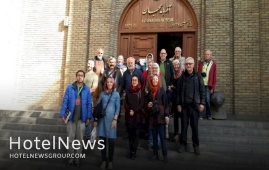
The northwestern Iranian province of East Azarbaijan plans to host a delegation of Turkish journalists and media personnel for a familiarization tour across the province in the near future, the provincial tourism chief has announced. A fam tour introducing East Azarbaijan’s tourism capabilities will be organized in cooperation with the private sector during the winter for Turkish media representatives and tourism activists, Ahmad Hamzezadeh said on Monday. A suitable platform can be provided for the development of the tourism industry by having fam tours in the province and taking advantage of the existing capacities in the sector, he explained. Holding fam tours is the best strategy for developing tourism in top countries, the official added. To accomplish this goal, the province’s tourism department is planning to organize fam tours for tourism activists and media members of the other neighboring countries early next year, he noted. Soaked in history and culture for millennia, Tabriz, which is the capital of East Azarbaijan, embraces several historical and religious sites, including the Jameh Mosque of Tabriz and Arg of Tabriz, and UNESCO-registered Tabriz Historic Bazaar Complex to name a few. The city became the capital of the Mongol Il-Khan Mahmud Gazan (1295–1304) and his successor. Timur (Tamerlane), a Turkic conqueror, took it in 1392. Some decades later the Kara Koyunlu Turkmen made it their capital, it was when the famous Blue Mosque was built in Tabriz. The city retained its administrative status under the Safavid dynasty until 1548 when Shah Tahmasp I relocated his capital westward to Qazvin. During the next two centuries, Tabriz changed hands several times between Persia and Ottoman Empire. During World War I, the city was temporarily occupied by Turkish and then Soviet troops. The ancient city was declared a world craft city of carpet weaving by the World Craft in 2016. It also bore the title of 2018 Islamic Tourism Capital.
Create: Dec 14, 2021 Edit: Dec 14, 2021 Regional News
